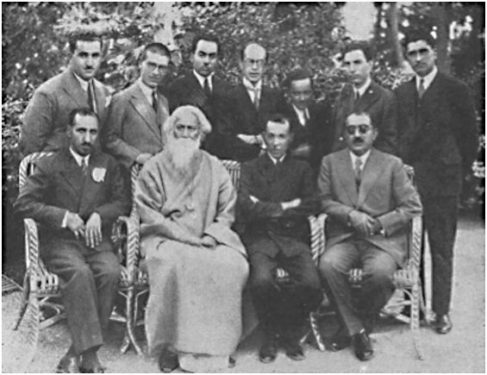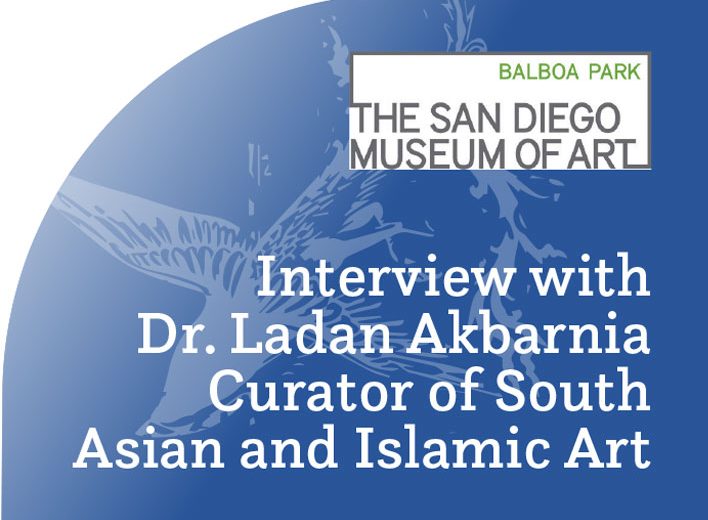Aria Fani
Rethinking Iranian Nationalism
There is an exciting new book in Iranian Studies entitled Exile and the Nation: The Parsi Community of India and the Making of Modern Iran by Afashin Marashi (University of Texas Press, 2020). The book largely addresses the following question: How did new understandings of Zoroastrianism as a monotheistic religion in harmony with modern values take form in the twentieth century and how did these new understandings fit within the emerging discourses of late Qajar and early Pahavli nationalisms? The way this study formulates these questions itself gives us a clue as to how Marashi, as a historian of modern Iran (a vague and problematic term, I know!), reads his sources and approaches the task of writing Iran’s multifaceted history. The book rightly assumes that new concepts of civilization, religious identity, and national belonging are not made out of thin air. They are not timeless; they undergo major changes in the course of history. The making and subsequent socio-political importance of new ideas are not inevitable or predestined.

We must then ask: to which historical periods, social processes, and particular figures does Exile and the Nation attribute the rise of new understandings of Zoroastrianism? The book focuses on the late nineteenth and early twentieth century. Why this period in particular? New technologies of print and mobility had significantly changed and intensified cultural connections among Iranians, Indians, and many other people. Increased mobility in the Indian Ocean, thanks largely to steamships, led to more travel, trade, and intellectual exchange; the consequential impact of these cultural exchanges, in the case of early Pahlavi nationalism vis-a-vis the Parsi community of India, had not been fully outlined or understood until the publication of Exile and the Nation.
Marashi’s study analyzes the life, role, and ideas of the following figures: Kaykhosrow Shahrokh (d. 1940), president of the Zoroastrian Association of Tehran and Majles Deputy; Dinshah Jijibhoy Irani (d. 1938), the key interlocutor between Bombay Parsis and Iranian intellectuals; Rabindranath Tagore (d. 1941), whose official travels in Iran in 1932 are subject of extensive analysis in the book; Ebrahim Purdavud (d. 1968), the distinguished scholar of ancient and middle Iranian texts; and Abdulrahamn Saif Azad (d. 1971), the editor of the periodical Iran-e bastan. Each chapter offers an analytical account of how each figure fits within emerging networks of religious, national, and civilizational alliance.

Rabindranath Tagore in Tehran, 1932, with members of the Iranian Literary Society. Source: Dinshah Irani Memorial Volume
What did these figures do and what came out of their intellectual enterprise? On page seven, the author gives us a succinct and compelling answer: “In the Iranian case, the encounter with the Parsi community produced profound implications for how intellectuals and nationalists came to imagine an Iranian modernity rooted in a rediscovered, reconceived, and reconstructed culture of Indo-Iranian neoclassicism.” Neoclassicism refers to the historical rise of a significant scholarly and cultural energy centered on the publication, study, and translation of, and commentary on, ancient and middle Iranian texts such as Avesta, the holy book of the Zoroastrians. Neoclassicism became an integral part of Pahlavi-era nationalism and its importance persists in the ways in which Iranians access their cultural heritage. This turn toward neoclassicism, Marashi argues, came about thanks to collaboration between Iranian nationalist intellectuals and members of India’s Parsi community.
Exile and the Nation is a richly textured study of some of the main threads that make up Iranian national culture. It makes a number of important interventions, some of which are worth mentioning here. The book is part of a scholarly trend that examines how Iranians interacted with and learned from non-European ideas and discourses. Much of the scholarship on Iranian nationalism thus far has focused on how European Orientalist knowledge prompted Iranian intellectuals to invent new discourses of language, literature, and learning. This body of scholarship has examined how travel and study in western European cities inspired Iranian students to rethink concepts of democracy, governance, freedom, justice, and literature upon their return to Iran. But Marashi shows us that we simply cannot afford to overlook the way Iranians made connections and collaborated with people in other cultural geographies: Turks, Arabs, Indians, Afghans, Tajiks, and many others. Marashi’s analysis illustrates that examining these exchanges is not just a matter of “completing the narrative.” In other words, the story of Iran-India connections is not just a curious footnote in the broader history of Iranian modernities. To the contrary, such a story makes us critically reconsider our longstanding assumptions about nationalism and modernity.
One assumption that Exile and the Nation forcefully challenges is that Iranian nationalism exists as a singular discourse, a unified phenomenon. Marashi shows how multiple systems of knowledge and multiple socio-political entanglements were involved in the making of Iranian nationalism, across different languages, geographies, and intellectual commitments. The study’s own examination of how Pahlavi-era intellectuals collaborated with Indian Parsis is deeply complex. We learn that collaboration does not necessarily mean being on the same political wavelength or being in total agreement. In fact, we learn in the book that many members of the Parsi community were interested in building connections with Iranian intellectuals because their understanding of Zoroastrianism was ecumenical, meaning inclusive and international. But that was not the main aim of many of their Iranian counterparts, such as Abdulrahamn Saif Azad, a vocal Nazi sympathizer who was interested in inventing and bolstering Iran’s Aryan cultural credentials. Marashi explains this tension with clarity:
The inherent tension between this liberal ideal and the authoritarian methods of the new Pahlavi state were either not understood by [Dinshah Jijibhoy] Irani and other interwar liberal intellectuals, or passed unacknowledged in the hopes of achieving broader social and political objectives. (85)
Why does all of this matter? It matters because neoclassicism is baked into the cultural discourses with which millions of Iranians, particularly in the diaspora, identify today: the problematic idea that “our” national and cultural identity is primarily grounded in pre-Islamic texts and that Zoroastrian beliefs and practices are more authentic to Iranians. So many of our influential intellectuals have expressed similar ideas and remained beholden to the idea of an Iranian cultural singularity. The question of authenticity is a rabbit hole that I will not get into in this essay. There may exist another false assumption, held by many of us, that Zoroastrianism as a religion was built on hundreds of years of cultural continuity. Marashi treats those sets of ideas with a deeply analytical and sober approach. For that reason alone, his book should be in the hands of every Iranian interested in the history of ideas and the trajectories of Iranian national identities.
Economic Inequality and the Pandemic
When we are in the eye of the storm, it is easy to assume that it couldn’t have been predicted or prevented. Yet, there were so many who warned us about the deeply vulnerable nature of our economic, public health, and demcratic systems. The investigative journalist Anand Giridharadas is one such voice. In his Winners Take All: The Elite Charade of Changing the World (Alfred A. Knopf, 2018), Giridharadas raises and addresses one of the pressing paradoxes of our times: why does so much economic disparity exist during a period of unprecedented philanthropy? He asks us to stop cheering for and uncritically accepting charitable enterprises that many institutions in our society, including food banks and schools, have come to rely on. Why? Giridharadas rightly argues that philanthropists and corporations behind many of these charitable efforts have a vested interest in safeguarding the highly broken and iniquitous system that produced their wealth. Therefore, they are more than willing to part with large chunks of their money so they would not have to part with the system that enabled them to accumulate their wealth.
Anyone who sees the grotesque inequality of our time on the one hand and the amount of wealth built by corporations like Amazon during (and well before) a pandemic that has devastated ordinary people worldwide on the other hand would have to draw the same conclusion: there is something entirely wrong with this capitalist system. Giridharadas’s analysis offers many clues as to why we’ve come to this point: an ongoing assault on labor unions, antitrust laws designed to prevent monopoly formation, and taxation. The latter is one of the most powerful mechanisms that exists in any democratic society that can be used to offset the racist, sexist, classist workings of capitalism through social spending. You don’t believe him? Take it from the mouth of billionaires like Bill Gates, who has spoken publicly about how he knows better than the government how to spend his wealth through his private foundation for the betterment of society. There is a minor problem there: such methods are deeply anti-democratic since no citizen can sit on the board of Gates’ foundation and inform its decision-making.

Winners Take All shows how giant corporations and wealthy families resort to charity in order to hide the fact that they are responsible for the fact that so many people live in poverty or, in the case of the criminal Sackler family, responsible for the death of so many people thanks to the opioid crisis they helped create. The reason we don’t think of the Sackler family the same way we think of Joaquín “Chapo” Guzmán, the former head of the Sinaloa cartel, is because the Sacklers have put their names on fancy museums all over the country and most probably have the phone numbers of many Democratic and Republican lawmakers on fast dial (yay to bipartisanship!). This is our epoch-defining problem: at a time when we need to wage a well-coordinated and collective fight against the climate crisis, which poses a grave danger to our ways of life, the wealthy have an obscene amount of power with which they are reinventing the world before our eyes. And they are doing so with a major aim: to hold onto most of their wealth, but all of their political power. Anand Giridharadas’s Winners Take All is a read for our times!
You may reach Aria via ariafani@uw.edu


















